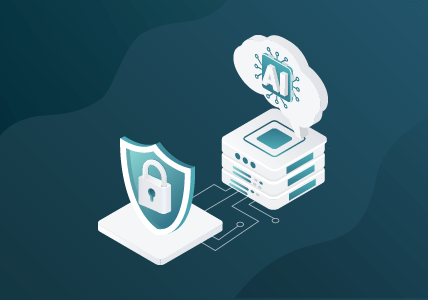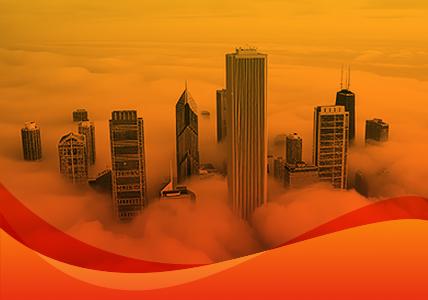What Is TLS 1.2, and Why Should You (Still) Care?
Transport Layer Security (TLS) 1.2 is a security protocol that allows you to securely transfer data over a network. Similar to the Secure Sockets Layer (SSL) protocol, the TLS protocol uses encryption to protect data that’s transmitted between a client and server. Find out more about TLS 1.2 encryption and how to enable TLS 1.2.
- A Brief History of Cryptographic Protocols
- What Is TLS 1.2?
- The Importance of TLS 1.2
- TLS 1.2 FAQs
- Final Notes
A Brief History of Cryptographic Protocols
The history of cryptographic protocols goes back decades, and the story begins with TLS/SSL decryption. The first cryptographic protocol was developed by Netscape in 1995, but it wasn’t long before vulnerabilities were discovered. By the turn of the century, TLS and SSL were both considered the primary security protocols for the web.
SSL
The first version of SSL was designed in 1995 by Netscape and was known as SSL 2.0. The idea behind the SSL protocol is that the client (device) uses a list of known certificates to validate the SSL certificate of a server (website). The client then generates a symmetric key and encrypts it, and that key is used to encrypt data during that session.
It didn’t take long before users discovered security issues with SSL 2.0. Just one year after the initial launch of the SSL protocol, SSL 3.0 was released to address the vulnerabilities in SSL 2.0. While SSL 3.0 was commonly used for nearly two decades, a major security issue was discovered in 2014 and it’s considered deprecated by the Internet Engineering Task Force (IETF).
TLS
The TLS protocol was designed to be an upgrade of the existing SSL protocol. The original version of the TLS protocol was designed in 1999, with TLS 1.1 released in 2006 and TLS 1.2 released in 2008. In 2018, TLS 1.3 was released as an updated version of the TLS 1.2 protocol, and it’s since been ratified by the IETF.
While TLS 1.3 is the latest version of the TLS protocol, TLS 1.2 encryption is still widely used. Over time, more websites will shift to TLS 1.3 encryption to take advantage of its enhanced security and performance.
What Is TLS 1.2?
TLS 1.2 is simply an upgraded version of TLS 1.1 that combines symmetric and asymmetric cryptography to enhance security and help you build a Zero Trust architecture. More specifically, TLS 1.2 replaces the MD5/SHA-1 combination in the digitally signed element with a single hash, ensuring increased security in negotiation during the handshake. At the same time, TLS 1.2 provides improvements to both the client’s and the server’s ability to designate algorithms for the hash and the signature. TLS 1.2 also supports increased authentication encryption and adds TLS extensions and AES cipher suites.
TLS 1.3 is the latest version of the TLS protocol that was published in 2018. TLS 1.3 improved web performance and security by increasing TLS handshake speed, improving load times, and removing obsolete and insecure TLS 1.2 cipher suites, such as the RSA key exchange algorithm, the RC4 stream cipher, the CBC mode cipher, and others.
The Importance of TLS 1.2
Even though there’s a newer version of the TLS protocol, TLS 1.2 is still widely used by many websites. Even more importantly, the earlier versions of the TLS protocol are no longer supported by major web browsers like Google Chrome, Mozilla Firefox, and Apple Safari as of the end of 2020.
This deadline had a relatively minor effect because most websites already use the TLS 1.2 protocol. If you fail to adopt TLS 1.2 or higher, users will receive a “Secure Connection Failed” message when attempting to visit your website. Plus, TLS 1.2 encryption helps you enhance security and eliminate blind spots.
TLS 1.2 FAQs
Is TLS 1.2 still in use?
While TLS 1.3 is the latest version of the TLS protocol, TLS 1.2 is still commonly used. People still use the TLS 1.2 protocol because it’s considered reasonably secure. TLS 1.2 is also supported by nearly every browser, making it a simple security solution. However, it’s important to note that the number of websites using TLS 1.3 is constantly growing.
What is the difference between SSL and TLS 1.2?
TLS 1.2 is essentially an upgraded version of the SSL protocol. While the SSL protocol came first, several security issues have been discovered over time. As a result, the IETF deprecated the SSL protocol and now considers the TLS protocol the most secure option.
How do I know if TLS 1.2 is enabled?
To check if TLS 1.2 is enabled, you’ll need to open the Windows Registry Editor. From here, navigate to the following key and make sure its value is 0:
- HKEY_LOCAL_MACHINE\SYSTEM\CurrentControlSet\Control\SecurityProviders\SCHANNEL\Protocols\TLS 1.2\Client\DisabledByDefault
Next, check the following key and make sure it’s set to 1:
- HKEY_LOCAL_MACHINE\SYSTEM\CurrentControlSet\Control\SecurityProviders\SCHANNEL\Protocols\TLS 1.2\Client\Enabled
If you can’t find these registry keys or the values are incorrect, TLS 1.2 isn’t enabled.
How do I enable TLS 1.2?
In Chrome and Microsoft Edge, you can enable TLS 1.2 by navigating to the Start Menu > “Internet Options” tab > “Advanced” tab, then scrolling down to find the TLS settings. Uncheck “Use TLS 1.0” and “Use TLS 1.1” and make sure “Use TLS 1.2” is checked.
For Firefox, type “about:config” into the address bar and press enter. From here, find the entry for “security.tls.version.max” and set the integer value to 3.
In Opera, press Ctrl + F12, click “Change proxy settings” in the Network section, and select the “Advanced” tab. From here, you can disable TLS 1.0 and 1.1 and enable TLS 1.2 like you would with Chrome and Microsoft Edge.
How do I know if I’m on a website using SSL or TLS?
Most browsers feature a padlock icon to the left of the address bar. You can click on this padlock icon to make sure you’re using a secure connection to connect to a website. On Firefox, click “More information” to view specific details about the security protocol.
Fortunately, most browsers don’t allow you to connect to websites using the SSL protocol because it’s not secure.
Final Notes
Encrypting traffic is an essential security step, and TLS is the security protocol of choice. GigaSMART® TLS/SSL Decryption from Gigamon enhances visibility for security and monitoring tools, allowing you to:
- Discover hidden threats in encrypted traffic
- Simplify monitoring and troubleshooting
- Visualize encrypted traffic
If you’re attempting to build a Zero Trust architecture, GigaSMART TLS/SSL Decryption can help. Schedule a free demo to find out how it works, or contact one of our experts if you have any questions.
Featured Webinars
Hear from our experts on the latest trends and best practices to optimize your network visibility and analysis.

CONTINUE THE DISCUSSION
People are talking about this in the Gigamon Community’s Security group.
Share your thoughts today








 Dan Daniels
Dan Daniels